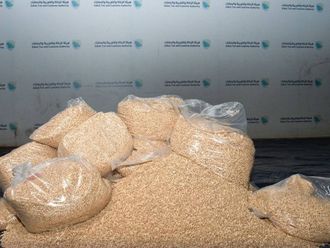
Manila: The United States and the Philippines vowed to maintain close defence and security ties in the face of increasing militarisation of the South China Sea and the threats posed by terrorism.
On Tuesday (US time), Philippines Defence Secretary Delfin Lorenzana separately met with US Secretary of State Michael Pompeo in Washington and Secretary of Defence James N. Mattis at the Pentagon.
Heather Nauert, US State Secretary spokesperson, said in a statement that Lorenzana and Pompeo affirmed their commitment to the Mutual Defence Treaty (MDT) of 1951 during the meeting in Washington. Under the terms of that agreement, both sides are bound by a collective defence pact to come to each other’s aid if either or both was attacked by an external party.
Aside from the MDT, Nauert said that Pompeo and Secretary Lorenzana discussed cooperation on addressing regional security challenges, including the militarisation of the South China Sea.
China continues to fortify the structures it had built up on islets in the South China Sea with reports saying that it had put up missile sites as well as an airfield from where bombers could be launched.
China’s apparent intentions concerning these structure are not just defensive in nature. The missiles and the bombers are strategic weapons and extends its offensive capabilities to threaten other countries close by such as the Philippines, Taiwan, Vietnam and Japan.
Pentagon Chief Spokesperson Dana W. White for her part, said Mattis’ meeting with Lorenzana covered a broad range of issues, including US support in the fight against terrorism from violent extremist networks.
The United States has been a traditional ally of the Philippines.
Despite having been granted independence, the Philippines has remain largely dependent of the US for defence and security. It had been a recipient of hand-me-down capital military hardware such as warships and other equipment from the United States under the Excess Defence Articles Programme.
But now, with the country’s increasing capability to acquire weaponry, the government under President Rodrigo Duterte is also looking at other countries as a source of military equipment. The Philippines had acquired Strategic Sealift Vessels and light cargo aircraft from Indonesia, frigates and fighter-bombers from South Korea and assault and sniper rifles as well as surveillance hardware from Israel. It is at present looking at the possibility of purchasing its first ever submarine.
Suddenly, America’s repository of its used hardware, is now its possible defence equipment customer.
Recently, the US sent a letter to Duterte eyeing the possibility of “future defence procurement…to strengthen the steadfast bonds” between the two longtime allies.
Duterte, in a letter on August 23, said he would only be amenable to a possible defence procurement deal with the US if Washington is able to show “utter good faith.”
Meanwhile, the Philippines will be getting the largest chunk of the United States’s two-year $300 million (Dh1.10 billion) security funding to Southeast Asia, said Walter Douglas, US Deputy Assistant Secretary of State for Public Affairs and Public Diplomacy in the Bureau of East Asian and Pacific Affairs.












